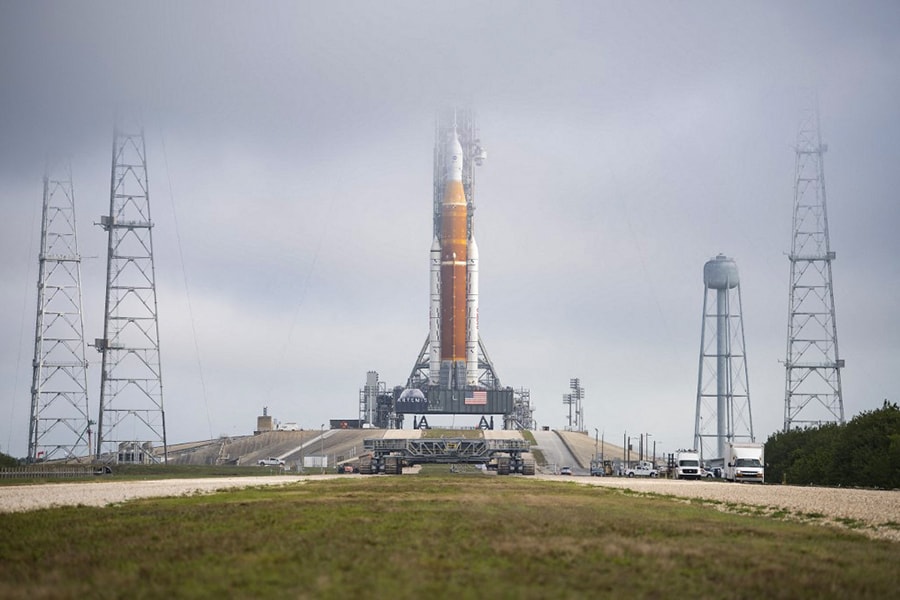
NASA plans to give SpaceX company on the moon
It won't just be SpaceX going to the moon if NASA officials get their wish. That could be a boon to the space dreams of Jeff Bezos
 NASA's Space Launch System (SLS) rocket with the Orion spacecraft aboard is seen atop a mobile launcher at Launch Complex 39B, Friday, March 18, 2022, after being rolled out to the launch pad for the first time at NASAís Kennedy Space Center in Florida. - Ahead of NASAís Artemis I flight test, the fully stacked and integrated SLS rocket and Orion spacecraft will undergo a wet dress rehearsal at Launch Complex 39B to verify systems and practice countdown procedures for the first launch.
Image: Aubrey GEMIGNANI / NASA / AFP)
NASA's Space Launch System (SLS) rocket with the Orion spacecraft aboard is seen atop a mobile launcher at Launch Complex 39B, Friday, March 18, 2022, after being rolled out to the launch pad for the first time at NASAís Kennedy Space Center in Florida. - Ahead of NASAís Artemis I flight test, the fully stacked and integrated SLS rocket and Orion spacecraft will undergo a wet dress rehearsal at Launch Complex 39B to verify systems and practice countdown procedures for the first launch.
Image: Aubrey GEMIGNANI / NASA / AFP)
It won’t just be SpaceX going to the moon if NASA officials get their wish. That could be a boon to the space dreams of Jeff Bezos.
As part of Artemis, NASA’s program to send astronauts back to the moon, the agency in 2019 looked to hire two companies to provide the landers to take its astronauts from lunar orbit to the surface of the moon. But with insufficient financing from Congress, the agency decided in April last year to give just one contract, to SpaceX.
Other companies would have the opportunity to compete for future missions, NASA officials said.
On Wednesday, Bill Nelson, the NASA administrator, said the space agency would soon announce a competition to develop a second lunar lander.
“I promised competition,” Nelson said, “so here it is.”
©2019 New York Times News Service







